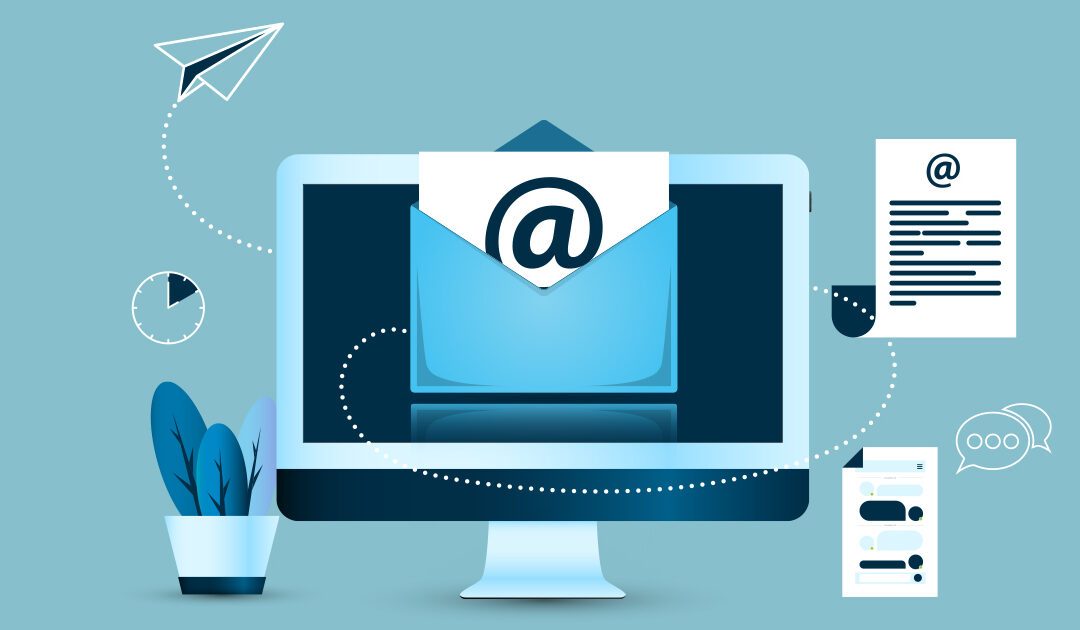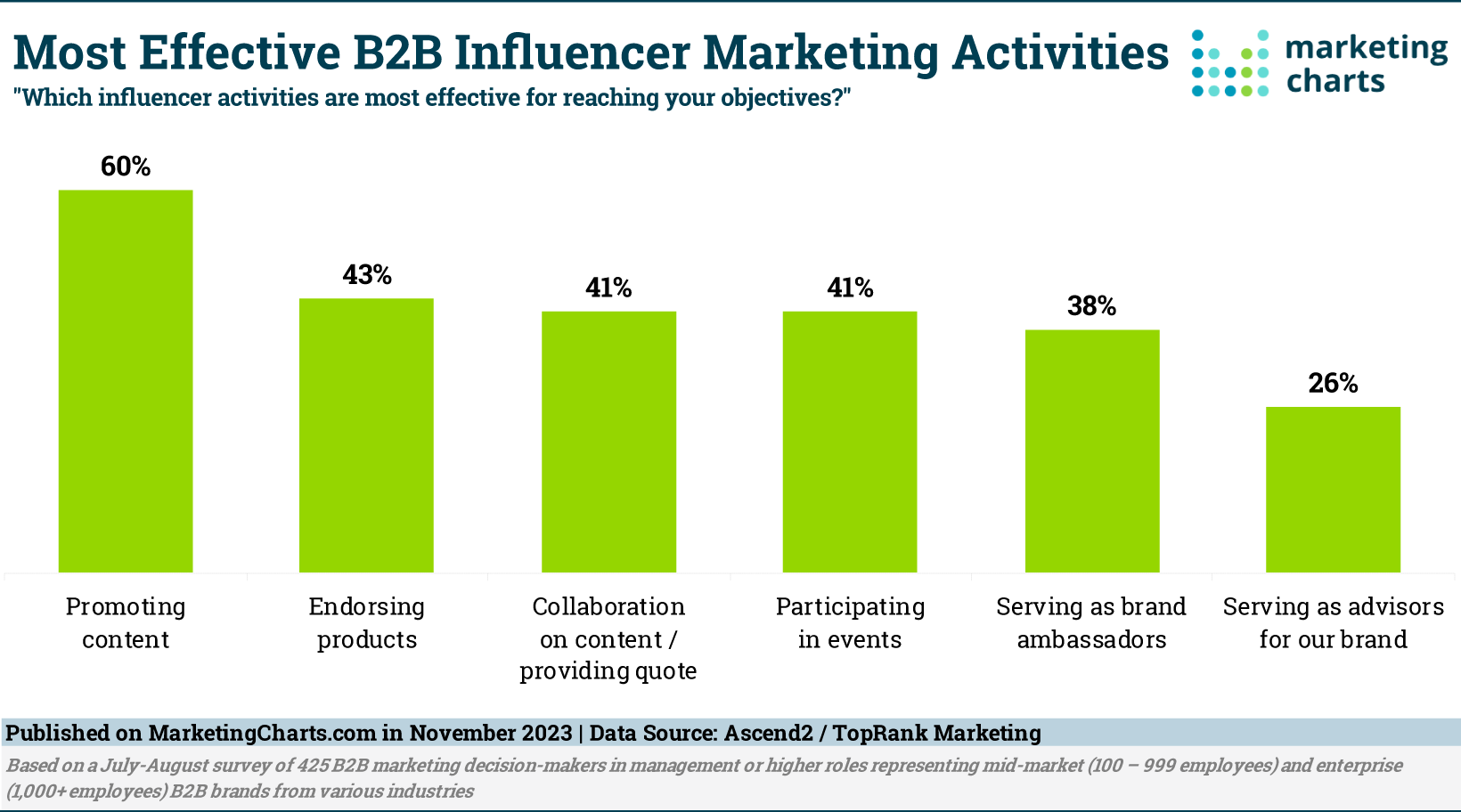
by Lori Berson | Feb 14, 2024 | Content Marketing, Marketing, Marketing Strategy
Gone are the days of text-heavy blog posts that leave your audience hungry for more. To captivate and engage in today’s digital landscape, you need to serve up an irresistible all-you-can-eat content buffet that’s not only high-quality but also innovative and engaging. This means breaking away from traditional formats and exploring new, creative ways to capture your audience’s attention.
Let’s explore the essential ingredients marketers can use to satisfy and delight their audience.
Visuals: Tantalizing the Eyes and Appetite
Forget boring stock photos. Whet their appetite with mouthwatering visuals like infographics, charts, videos, gifs, original graphics, and even AI-generated imagery. These eye-catching elements can transform your content from bland to brilliant and make complex information more digestible while adding flavorful brand flair.
With user-friendly tools like Canva and Adobe Express (both offer free versions), anyone can cook up amazing visuals.
Podcasts: Audio Amuse-Bouches
Podcasts are soaring in popularity, offering an intimate, screen-free way to connect with your audience. Strategically sprinkle podcast episodes across your menu to build brand awareness and deliver value through stories, educational content, discussions, and industry insights. These AI tools make it simple to turn text into captivating podcasts: Wondercraft, Riverside, and Adobe Podcast.
Remember to promote new episodes through email, newsletters, social media, and your blog for a multi-channel approach.
Interactive Content: Letting Your Audience Sample the Goods
Interactive content invites your audience to actively participate in the experience. Quizzes, games, calculators, image sliders, AR filters, interactive videos, and other digital tools provide value while capturing contact info.
For example, an interactive calculator provides personalized data guiding users through their buying journey while keeping them engaged. To get started, check out Okendo, Quizgecko, and Meiro.
User-Generate Content (UGC): Customer-Crafted Signatures
User-generated content offers authenticity and community. Highlight UGC-like social shares, video testimonials, and reviews to show you value your clients while improving engagement. Some easy-to-use tools include GatherUp, Boast, and TrustPilot.
Time To Dine on Captivating Content!
Like an artful chef, captivating content requires the right blend of visuals, audio, interactive elements, and UGC artfully presented across channels. Serve up your audience a journey that informs, entertains, and provides value. Do this, and your content will leave them satisfied and eager to come back for more.
For help with your content strategy and marketing, schedule a call or email Lori Berson at lberson@BersonDeanStevens.com.
BersonDeanStevens has been a recognized brand strategy and marketing leader for over 25 years. We work in partnership with you to differentiate your brand and achieve your business goals. Client list.

by Lori Berson | Feb 13, 2024 | AI, artificial intelligence, Marketing, Marketing Strategy
In the rapidly evolving world of marketing, artificial intelligence (AI) has emerged as a powerful tool, offering unprecedented capabilities to businesses aiming to enhance their content creation and overall marketing strategies. However, it’s crucial to acknowledge that AI, despite its advanced capabilities, is not a cure-all or magic bullet. It’s a tool that needs a well-thought-out marketing strategy to create transformative content.
AI offers the potential to generate content at scale, analyze data, automate tasks, and personalize marketing efforts in ways previously unimaginable, but AI-generated content requires human direction, input, expertise, and editing. In and of itself, AI content is not always correct, often over-written and not written in context. To be successful with AI, you need someone driving the process.
At BersonDeanStevens (BDS), we understand the delicate balance between leveraging cutting-edge AI technologies and maintaining the human touch that is fundamental to creating marketing content that resonates with your audience. With over 25 years of experience in developing results-driven content, campaigns, and programs, BDS brings a wealth of knowledge and expertise to incorporate AI to boost results.
Whether you are looking for an ally to handle strategic content creation, help train your team on the proper use of AI, or need consulting from time to time, BDS is your go-to resource.
For help with AI and how to successfully integrate it into your business, schedule a call or email Lori Berson at lberson@BersonDeanStevens.com.
BersonDeanStevens has been a recognized brand strategy and marketing leader for over 25 years. We work in partnership with you to differentiate your brand and achieve your business goals. Client list.

by Lori Berson | Jan 11, 2024 | AI, artificial intelligence, Marketing, Marketing Strategy
Staying ahead of the marketing curve is not just an advantage, but a necessity – especially with Artificial Intelligence (AI). Below are just a few examples (and tools) of how AI can elevate every aspect of a marketing campaign, from targeted planning to insightful post-campaign analysis.
The integration of AI in marketing goes beyond automation. It’s a fundamental shift in how we conceptualize and execute marketing strategies. AI offers unparalleled efficiency, personalization, and scalability in campaigns, setting a new benchmark in marketing excellence.
Tailoring Campaigns with Precision: The Pre-Campaign Stage
AI-Driven Audience Targeting
AI’s capability to analyze and interpret complex data sets enables marketers to identify and target the most receptive audiences. This allows for highly targeted marketing campaigns that speak directly to the needs and interests of your audience.
Content Creation
Imagine a creative assistant that helps generate ideas, themes, and content. AI aids in creating diverse and appealing marketing materials, ensuring your message is both engaging and relevant.
Campaign Planning
AI tools can assist in campaign planning by predicting market trends and customer behavior, allowing marketers to stay ahead of the curve.
Engaging Customers: The Active Campaign Stage
Enhancing Customer Interaction
AI can personalize customer interactions by analyzing past behavior and preferences. This results in more engaging and relevant communications.
Real-time Campaign Optimization
AI’s ability to process data in real-time allows marketers to make on-the-fly adjustments to campaigns, ensuring maximum impact and efficiency.
Predictive Analysis for Better Results
AI’s predictive capabilities enable marketers to anticipate customer needs and respond proactively, creating a more dynamic and responsive marketing strategy.
Measuring Success and Learning: Post-Campaign
Insightful Analytics and Reporting
AI’s ability to process and analyze post-campaign data is invaluable. It provides detailed insights into what worked and what didn’t, paving the way for informed decision-making in future campaigns.
Content Lifecycle Management
AI isn’t just about creating content; it’s also about managing it effectively. From identifying the best-performing content to suggesting repurposing strategies, AI ensures your content continues to deliver value over time.
AI Tools
- Demandbase and 6Sense – Leverage AI and intent data to help identify high-value accounts and audiences to target to help with account-based marketing planning.
- Drift – An AI chatbot that can have conversational interactions with website visitors to engage prospects. Chatbot data helps inform campaign messaging and offers.
- Madkudu – Uses AI and machine learning to analyze customer data and make personalized recommendations for marketing campaigns – helping with segmentation and targeting.
- Adobe Sensei – AI inside Adobe marketing products like Adobe Campaign can assist with campaign planning and optimization by predicting performance and identifying high-value customers.
- Salesforce Einstein – AI that’s built into Salesforce to optimize the sending of email campaigns, provide predictive lead scoring, and automated personalization.
- ChatGPT, Claude, Bard, and Microsoft Copilot are general AI platforms that help you brainstorm ideas, and create outlines, articles, blog posts, social media, e-books, emails, ad copy, and more!
- Persado – Uses AI to generate emotionally intelligent marketing copy and subject lines that drive engagement for email campaigns and other messages.
- Midjourney, DALL-E, Canva, Kittl, and Adobe Firefly can rapidly create unique images to tell your story.
- Sprout Social and HootSuite – Use AI for image and text analysis to help make content recommendations and schedule social media campaigns.
The key is finding AI marketing tools that align with your goals, data sources, technical capabilities, and budget.
AI – Your Strategic Partner for Growth
AI is more than just a technological upgrade for your marketing; it’s a transformative power. It enables a level of precision, personalization, and efficiency previously unattainable. Whether it’s through smarter targeting, creative content generation, real-time personalization, or insightful post-campaign analysis, AI is an indispensable asset for modern marketers.
To achieve your marketing objectives more effectively and efficiently, we recommend you use AI not only in your marketing strategy but throughout your campaigns – in addition to using it for sales, project management, presentations, etc.
Stay tuned for more insights and tips on leveraging AI for unparalleled marketing success.
For help with your marketing and how to incorporate AI, schedule a call or email Lori Berson at lberson@BersonDeanStevens.com.
BersonDeanStevens has been a recognized brand strategy and marketing leader for over 25 years. We work in partnership with you to differentiate your brand and achieve your business goals. Client list.

by Lori Berson | Jan 9, 2024 | Marketing, Marketing Strategy, Social Media
In today’s digital marketing landscape, leveraging social media for customer service has become essential. This approach, however, extends beyond simply reacting to customer complaints. It’s about integrating into the wider framework of engaging with your community across all social platforms where your presence is felt.
The key to effective response lies in the art of listening. Social listening involves delving into online dialogues about your brand, competitors, and relevant topics to gain deeper insights into your audience’s perceptions. Consider this: what’s the buzz around your latest product, your customer service efficiency, or even your brand’s new visual identity? To learn about what’s being said about your brand, below are several social listening tools for both small businesses and large corporations.
Social Listening Tools to Gain Audience Insights
It’s important to recognize that not all online mentions require direct engagement from your brand’s official channels. The primary goal of social listening isn’t always to respond but to understand and learn from these conversations.
For example, the launch of a new product or service by your company. Through social listening, you might notice a pattern of user experiences pointing to a common issue. By monitoring discussions around your product or service and brand on various social channels, you can gather valuable insights into user challenges and address them effectively. This proactive approach not only resolves issues but also demonstrates your brand’s commitment to listening and improving based on customer feedback.
For help with your social media marketing, schedule a call or email Lori Berson at lberson@BersonDeanStevens.com.
BersonDeanStevens has been a recognized brand strategy and marketing leader for over 25 years. We work in partnership with you to differentiate your brand and achieve your business goals. Client list.

by Lori Berson | Dec 29, 2023 | Email Marketing, Marketing
In February 2024, Gmail and Yahoo will be implementing stricter email sending requirements for high-volume email marketers. If you send more than 5,000 emails per day through these providers, you’ll need to ensure your email campaigns comply with the following rules:
- Authenticate Your Emails
You’ll need to authenticate your emails using protocols like SPF, DKIM, and DMARC. These authentication methods verify your identity as a legitimate sender and help prevent spoofing and phishing. Setting up proper authentication strengthens your sender reputation with ISPs.
- Streamline Unsubscribe Options
Recipients should be able to easily unsubscribe from your emails with one click. When someone opts out, you’ll need to honor their unsubscribe request within two days. Make sure your email service provider has automated features to handle unsubscribes smoothly.
- Maintain Low Complaint Rates
To stay in compliance, you’ll need to keep your spam complaint rate below 0.3%. This means sending high-quality, relevant content that subscribers want to receive. Monitor your complaint rate and optimize your lists and campaigns as needed.
While these new standards raise the bar for marketers, they shouldn’t cause panic. With some preparation, marketers can continue reaching inboxes and engaging audiences under Gmail and Yahoo’s new policies. Follow the tips above for a smooth transition that maintains deliverability.
For help with your email marketing, schedule a call or email Lori Berson at lberson@BersonDeanStevens.com.
BersonDeanStevens has been a recognized brand strategy and marketing leader for over 25 years. We work in partnership with you to differentiate your brand and achieve your business goals. Client list.
![Most Effective B2B Influencer Marketing Tactics [Study]](https://bersondeanstevens.com/wp-content/uploads/2023/12/InfluencerMarketing.jpg)
by Lori Berson | Dec 28, 2023 | Marketing
Influencer marketing has become an essential part of the marketing mix for brands across many industries. Now, it is making major inroads into the B2B space as well. Recent research shows that B2B marketers are rapidly adopting influencer strategies and finding them effective for goals like increasing awareness and sales.
The question is no longer, ‘Does influencer marketing work for B2B?’ We already know the answer. The question is, ‘How can we get the best results from B2B influencer marketing?’ And, ‘What are the most successful B2B brands doing that the rest of us are missing?’
According to a new report from Ogilvy, three-quarters of B2B decision-makers worldwide currently use influencer marketing. Among those, over 90% plan to expand their use of influencers in the future. Another study from Ascend2, in partnership with TopRank Marketing, found that influencer marketing is already part of the mix for 85% of surveyed mid-market and enterprise B2B brands in the US.
As B2B marketers gain more experience with influencer strategies, they are becoming more sophisticated in their approaches. While 15% are just beginning with influencer marketing, about half are at a moderate maturity level. Nearly one-quarter have reached expert status, according to the Ascend2 report.

Influencer Marketing Benefits
The biggest payoffs reported are increased sales revenue and improved brand reputation. Two-thirds of respondents in the Ogilvy study said their B2B influencer campaigns had more impact on marketing performance than brand-only efforts.
In the Ascend2 research, current customers were the most commonly used type of influencer. However, brands at moderate maturity levels reported greater use of professional influencers and prospects compared to beginners. The Ogilvy findings suggest employees could also be untapped influencers, with 89% of C-suite marketers saying staff can add value when integrated into strategies.
How to Identify Influencers
When evaluating potential influencers, B2B brands look for several key traits. The most important is that the audience sees the influencers as trustworthy and they have a relevant audience or network. Professional credentials, audience size, and subject matter expertise are also key considerations.
Influencer Program Challenges
Executing an influencer program brings challenges like identifying and engaging influencers, measuring results, and creating content. Over half of respondents struggle to find and connect with the right influencers. Many also pointed to difficulties tracking performance, collaborating with influencers on content, and documenting an integrated strategy.
Artificial Intelligence Applications
Artificial intelligence (AI) is emerging as a useful tool for some of these hurdles. While content creation is the top AI application now, performance tracking and influencer selection follow closely behind. AI could help provide data-driven insights and efficiencies.
AI Influencer Tools
- Influencity – Build a stronger Influencer Relationship Management (IRM) strategy with access to comprehensive profile statistics on a platform that analyzes millions of the most influential content creators on social media today.
- Insense – Collaborate with multiple vetted creators at once. Get a steady flow of authentic UGC starting at $50 per video. Increase your ads performance with whitelisted ads.
- InsightIQ – Define, track, and boost influencer marketing ROI.
- Partnerize – End-to-end partnership platform that automates tedious tasks associated with partner management to help you find and convert your target audience at scale.
- Rad AI – Creative intelligence that brings new standards to influencer marketing.
- Squad – One-stop solution for influencer marketing at scale. Collaborate between influencers and brands.
- Tapasom – Discover the perfect influencer for your brand. Work together effortlessly. Make creator marketing easy.
For content, social posts are the most common influencer marketing format for B2B. Social media allows influencers to share information with their networks, an important value proposition, according to the Ogilvy research. Nine in ten B2B marketing leaders see social media influencers as vital for staying current in their industry.
Tactics
When it comes to tactics, content promotion by influencers is most effective for achieving objectives. Product endorsements, quotes for content, and event participation also deliver results for some B2B brands.
Summary
Influencer marketing adoption is accelerating among B2B marketers. As strategies mature, brands are rapidly expanding their programs to leverage influencers’ value for driving awareness, sales, and reputation. While challenges remain, AI and best practices are helping refine influencer identification, partnership, and measurement. The future is bright for B2B brands successfully harnessing the power of influencers.
The Ascend2 and TopRank Marketing results are based on a July-August survey of 425 B2B marketing decision-makers in management or higher roles representing mid-market (100 – 999 employees) and enterprise (1,000+ employees) B2B brands from various industries. The Ogilvy results are based on a survey of more than 550 senior B2B decision-makers working at companies of various sizes across 11 markets.
For help with your influencer marketing, schedule a call or email Lori Berson at lberson@BersonDeanStevens.com.
BersonDeanStevens has been a recognized brand strategy and marketing leader for over 25 years. We work in partnership with you to differentiate your brand and achieve your business goals. Client list.





![Most Effective B2B Influencer Marketing Tactics [Study]](https://bersondeanstevens.com/wp-content/uploads/2023/12/InfluencerMarketing.jpg)
